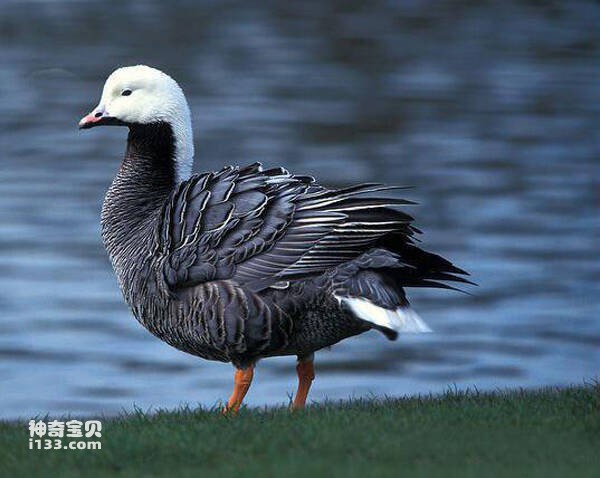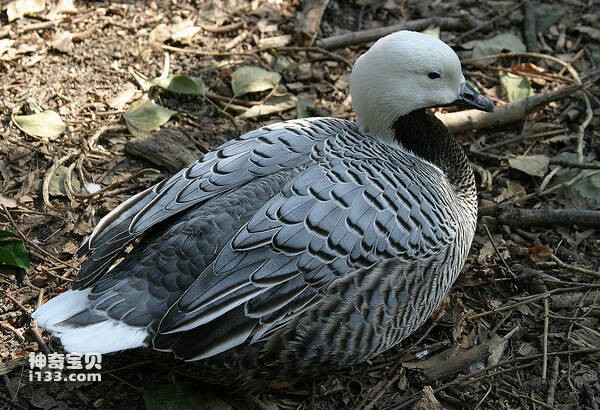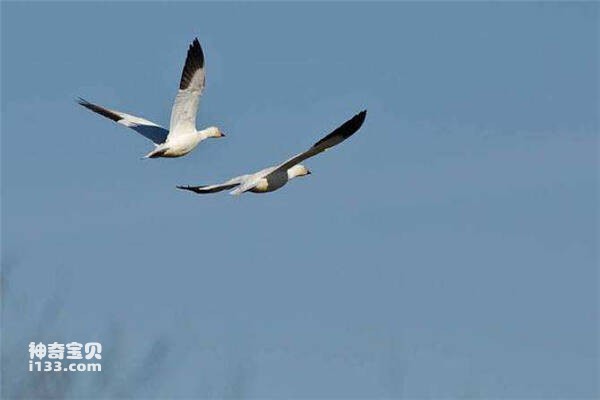Emperor Goose
IUCN
LCBasic Information
Scientific classification
- name:Emperor Goose
- Scientific Name:Emperor Goose,Emperor Goose
- Outline:Waterfowl
- Family:
Vital signs
- length:About 68.5 centimeters
- Weight:About 2.8kg
- lifetime:No textual research information is available
Feature
There is a gray and obese body, similar to both sexes, the adult bird's head and nape are white, the throat is black, the goose's beak and webbed legs are pink, the mantle feathers are black, and the coverts are dark blue-gray, covered with white spots
Distribution and Habitat
Emperor geese are confined to the Bering Sea, breeding in the Arctic and subarctic extreme northeast of the United States, Alaska, and wintering from the eastern seaboard to Russia, mainly along the ice to the Aleutian Islands coast. There are smaller numbers in Canada and the Alaska Peninsula, with a few reaching as far south as California.
Country of origin: Russian Federation, United States. Travellers: Canada, Japan.
Emperor geese begin their annual spring migration in large numbers, moving from their winter habitat on the Aleutian or Commander Islands in Alaska, Russia, to spring pastures in early March. These emperor geese arrive in Canada's Yukon Territory and Bristol Bay, the Cascoquem Delta, between mid-May. Emperor geese forage in these rich areas in the spring and prepare to nest in early summer. In late May and early June, they reach breeding grounds on the Seward Peninsula, St. Lawrence Island, and Siberia. Autumn leaves in late August and early September, makin
Appearance
The average length of an emperor goose is about 68.5 cm, with a wingspan of 110 cm and a weight of 2.8 kg. There is a gray and obese body, similar to both sexes, the adult bird's head and nape are white, the throat is black, the goose's beak and webbed legs are pink, the mantle feathers are black, and the coverts are dark blue-gray, covered with white spots. The underage blue snow geese are also like earth geese, but darker. Emperor geese and white geese can mate. Their offspring are either authentic blue or white snow geese. It's very different from humans. White and black children will not be all white or all black.
Details
The Emperor Goose (Anser canagicus) is a large, individual bird of the genus Anser.

Except during the breeding season, emperor geese live in flocks, usually consisting of tens, hundreds, or even thousands of individuals, especially during migration. He is flexible in walking on the ground, agile in action, and often stands on one foot when resting. Swimming and diving are good, but can not last long, rarely dive. Action is extremely cautious and cautious, vigilance is very high, especially when the group of foraging and resting together, there are often one or several gray geese as guards, do not eat, do not sleep, vigilant elongation of the neck, observing the four sides, once found that the enemy is near, they first take off, and then other members fly away.

Every year in late May, emperor geese arrive in Alaska's Arctic coastal plain to nest and breed. Nesting areas are usually chosen on higher ground in the tundra and are covered with weeds. A clutch of 4-7 eggs is laid in early June, and the incubation period is 22-23 days. Once the little emperor goose breaks out of its shell, the mother goose migrates with her offspring to the rivers and streams. Because the newly hatched goose has no ability to fly, it must find a hidden place to escape from predators. During this time, some families of emperor geese and snow geese automatically unite into groups of up to 150-250 individuals. Little Emperor geese grow up well under the hard support of their mother, and can fly high in just 35-45 days.

The emperor goose has a limited range and is thought to have a moderate population decline, although the reason for the decline is not clear, but due to habitat loss, it has been listed as a threatened species.
Listed on the International Union for Conservation of Nature (IUCN) 2013 Red List of Threatened Species ver 3.1 - Near Threatened (NT).
Protect wild animals and eliminate wild meat.
Maintaining ecological balance is everyone's responsibility!








